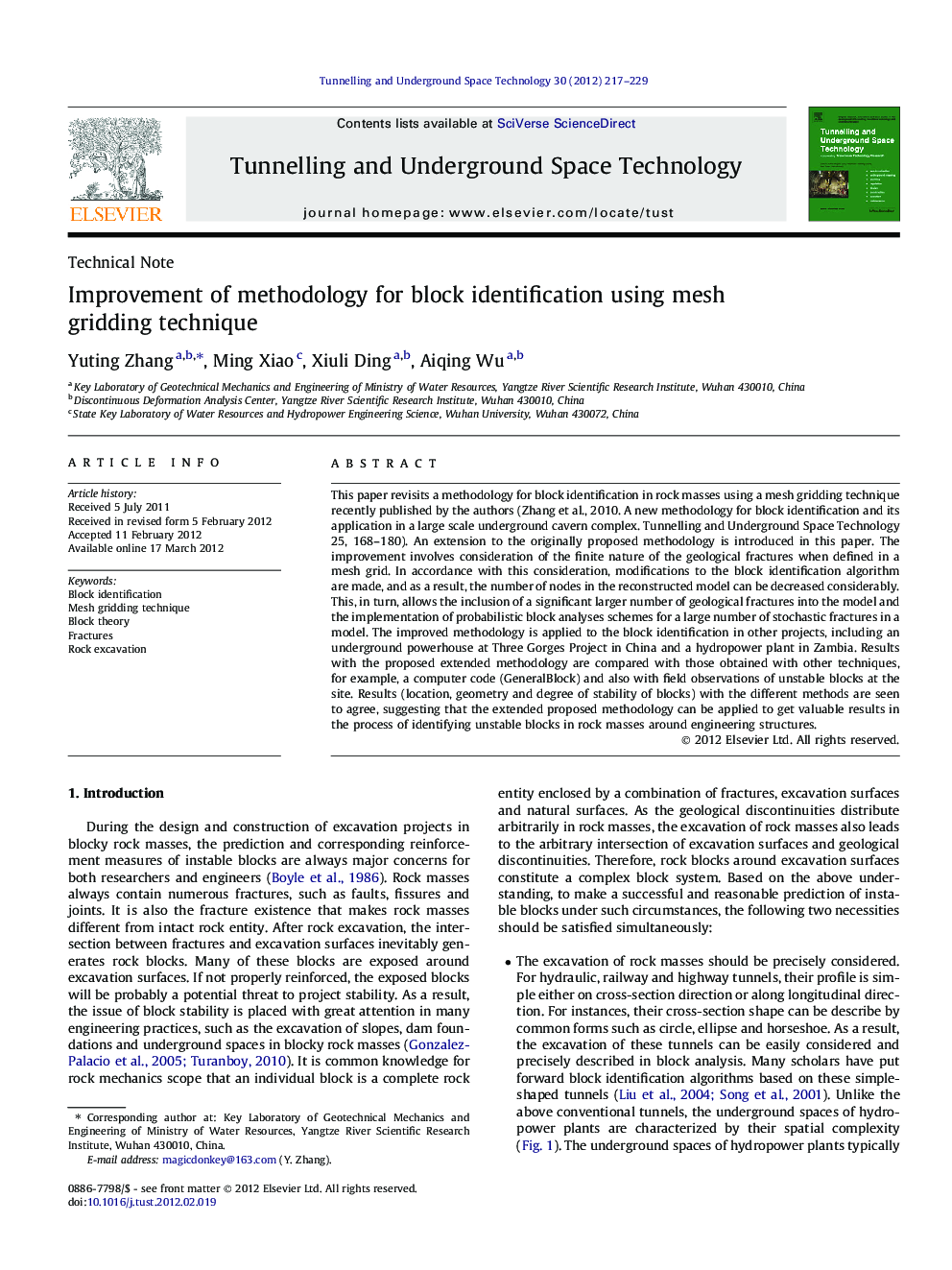| Article ID | Journal | Published Year | Pages | File Type |
|---|---|---|---|---|
| 311931 | Tunnelling and Underground Space Technology | 2012 | 13 Pages |
This paper revisits a methodology for block identification in rock masses using a mesh gridding technique recently published by the authors (Zhang et al., 2010. A new methodology for block identification and its application in a large scale underground cavern complex. Tunnelling and Underground Space Technology 25, 168–180). An extension to the originally proposed methodology is introduced in this paper. The improvement involves consideration of the finite nature of the geological fractures when defined in a mesh grid. In accordance with this consideration, modifications to the block identification algorithm are made, and as a result, the number of nodes in the reconstructed model can be decreased considerably. This, in turn, allows the inclusion of a significant larger number of geological fractures into the model and the implementation of probabilistic block analyses schemes for a large number of stochastic fractures in a model. The improved methodology is applied to the block identification in other projects, including an underground powerhouse at Three Gorges Project in China and a hydropower plant in Zambia. Results with the proposed extended methodology are compared with those obtained with other techniques, for example, a computer code (GeneralBlock) and also with field observations of unstable blocks at the site. Results (location, geometry and degree of stability of blocks) with the different methods are seen to agree, suggesting that the extended proposed methodology can be applied to get valuable results in the process of identifying unstable blocks in rock masses around engineering structures.
► This paper reports an original tool for block identification in rock masses. ► Mesh gridding technique makes it easy to consider complex excavations. ► The method is proved rational and effective in block identification of caverns. ► The method is also robust for slopes and foundations where rock masses are blocky.
